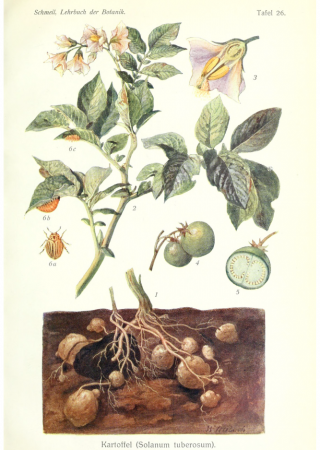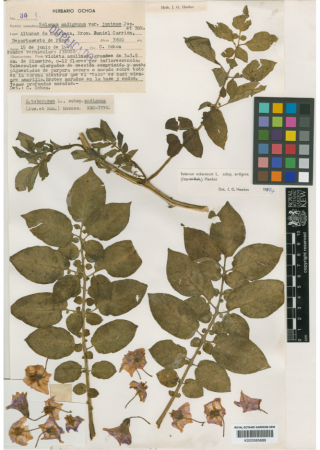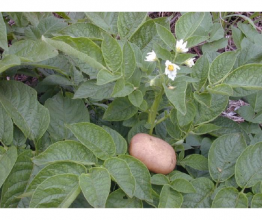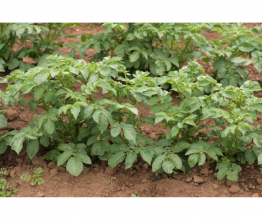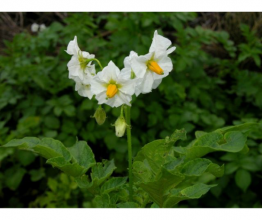Potato
- ...potato tubers exposed to sunlight turn green (the concentration of harmless chlorophyll increases), but at the same time, the concentration of solanine also increases, as a natural defense against animal gnawing of root portions that have been uncovered?
- ...some varieties of potato contain greater glycoalkaloid concentrations than others; breeders developing new varieties test for this, and sometimes have to discard an otherwise promising cultivar? Breeders try to keep solanine levels below 200 mg/kg (200 ppmw).
- ...the U.S. National Toxicology Program suggests that the average American consume at most 12.5 mg/day of solanine from potatoes (the toxic dose is actually several times this, depending on body weight)?
- ...Douglas L. Holt, the State Extension Specialist for Food Safety at the University of Missouri, notes that no reported cases of potato-source solanine poisoning have occurred in the U.S. in the last 50 years, and most cases involved eating green potatoes or drinking potato-leaf tea?
Basic information:
Division – angiosperms (Magnoliophyta)
Class – eudicots (Rosopsida)
Maximum height – 70 cm
Distribution – worldwide, originally South America
Type of poison – glycoalkaloids
Distinguishing marks:
The plant grows as a branched stalk. It has large leaves, with fuzzy undersides. White to purple flowers are joined at the culminant. Pods are round green berries about the size of cherries.
Potatoes are 40-70 cm tall herbs, belonging to the Solenaceae family. They are originally from South America, but have been cultivated all over the world as a food staple. Potatoes contain poisonous glycoalkaloids, of which the two most poisonous are solanine and chaconine. Poisonous glycoalkaloids are present in all green parts of the plant, primarily in the green berries and shoots. In the tuber, they are present only rarely, and are concentrated in the parts that are exposed to air and turn green. Glycoalkaloid poisoning symptoms are dry and scratchy mouth, nausea, vomiting, diarrhea or possible cramping. They also irritate the intestinal lining and cause disintegration of blood cells.

